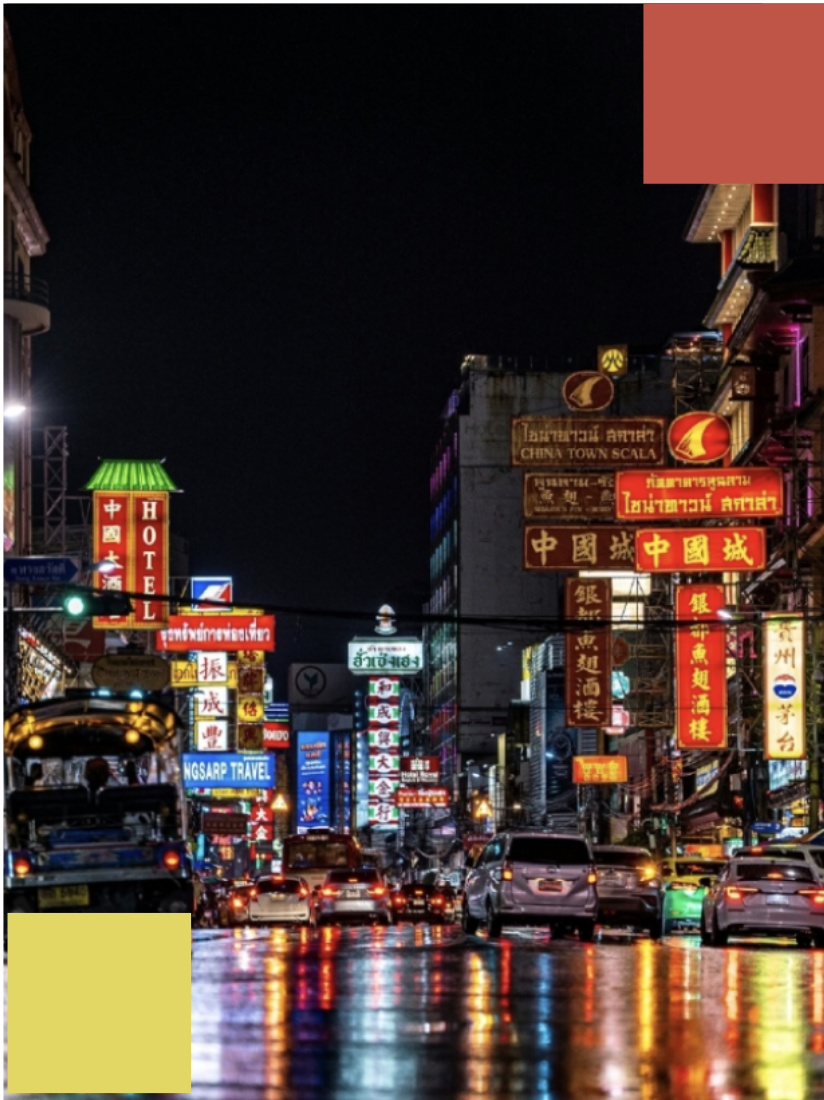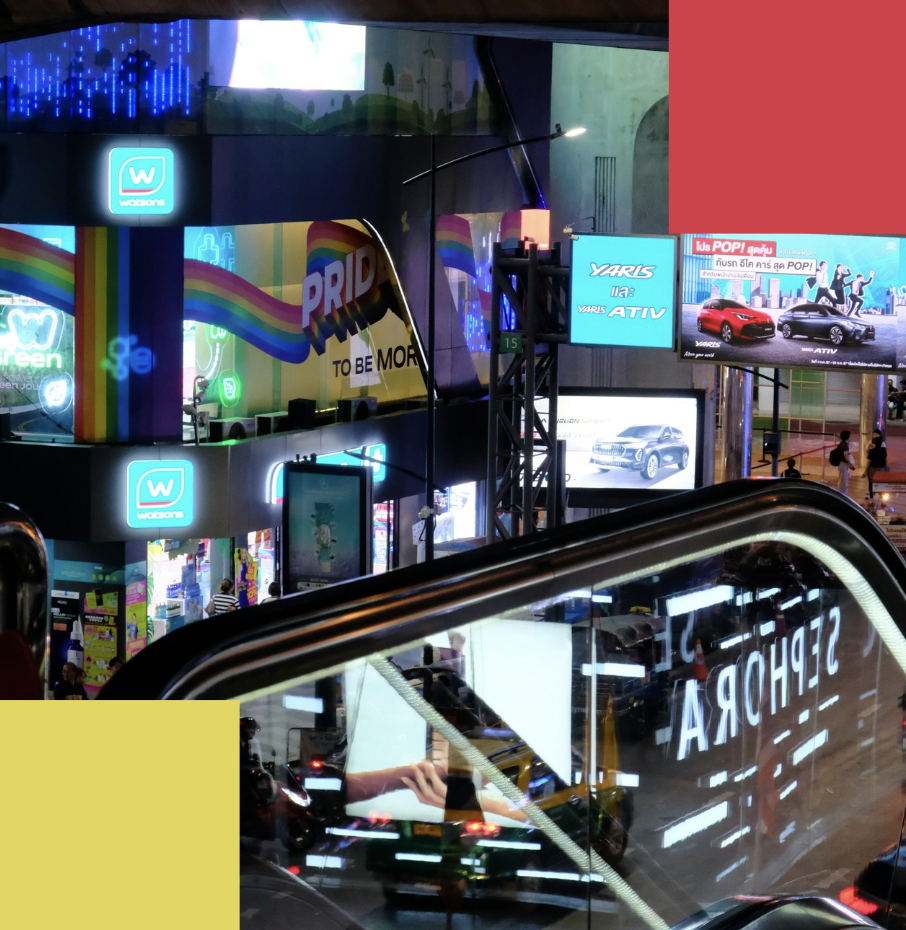THEMES
‘Urban Dialogue’
Transformative Living Phenomena
Transformative Living Phenomena
Urban development in the 21st century is no longer defined solely by infrastructure expansion or conventional planning models. The dynamic changes driven by population growth have led cities to expand without boundaries, reflecting the increasing complexity and diversity that all urban environments must confront.
People seek spaces that respond to their needs, express their identities, and share narratives that connect with their communities and ways of life.
As such, the ‘city’ plays a vital role as a space for participation, exchange of ideas, and dialogue— becoming a platform for interaction that integrates knowledge, design, data, and media technologies to reflect the evolving relationship between humans, the urban environment, and technology.
01 Vibrant Culture with Media Architecture
Exploration the role and potential of media architecture in strengthening and enriching cultural life at the community scale. It emphasizes the use of media and technology to support identity expression and highlight the ethnic and cultural diversity embedded in contemporary urban contexts. The approach encourages creative community participation through participatory design and the integration of local knowledge with modern technologies. These efforts aim to enhance public spaces and create vibrant cultural hubs that reflect the culture and communities, a place where people connect, cultural activities are dynamic and thriving.
- Vibrant and vivacious community with media architecture
- Media architecture and culture: cultural diversity
- Media architecture in contemporary context
- Extended Reality
- Collective imaginaries and social innovation
- DIY media architecture: open and participatory approaches to community engagement

02 New Media Paradigms, Reshaping the Cities

Transformation at the city scale, where new media is not just an element within the urban landscape, but a powerful tool for reshaping the city as a whole and preparing it for future change. It highlights the use of network communication and information technologies—such as Big Data, AI, IoT, XR and intelligent information systems—as key drivers in designing and organizing urban systems. These technologies enhance connectedness, efficiency of resource management, spatial planning, and the overall experience of urban life.
- City revitalization
- Reactivating urban spaces with media
- Urban acupuncture - Urban Value Regeneration
- Physical and social fabric of cities and media architecture
- Media architecture as Critical Spatial Practice
- Decolonisation through media architecture
- Urban Data / Urban Informatics
- Technology, digital and human networks
03 Urban Future & Transhuman Citizens
Creation of future cities goes beyond physical boundaries or human-centered perspectives. It embraces other forms of life, and inclusive systems that welcome all beings and ways of existing.. It also envisions the world that blends the physical and virtual realities to support new ways of living, engaging in activities, and shaping environments for the urban futures to come.
- Futures and Techno-humanism, More-than-Human cities
- Post-Anthropocentric architectural futures
- Media architecture and speculative future
- Microclimate / regenerative design with media architecture



